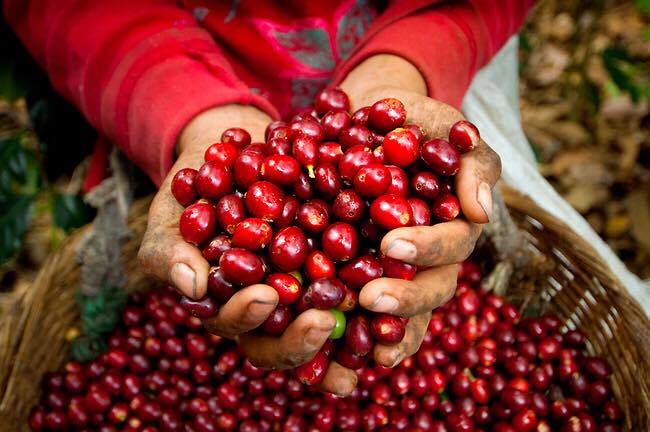The unique way of carrying Costa Rican Coffee describes the flavor of Pila Manor Solar Iron pickup.
For professional baristas, please follow the coffee workshop (Wechat official account cafe_style)

Tanning treatment of Iron truck in Costa Rican Coffee Pila Manor
Costa Rica La Pira Estate Typica Natural
The 50-year-old regular list of COE bidders
La Pire this coffee estate, located in Costa Rica's famous coffee product "Dota Valley", has a changeable climate, which can give coffee trees the ideal temperature to grow and produce coffee fruits with excellent flavor.
It was bought 50 years ago by the father of the current owner, Carlos Urena, and the locals called the manor by his nickname "Piro". After inheriting his father's estate, Carlos Urena insisted on growing coffee organically, producing coffee beans for many years as a qualified organic certified producer. He has been producing coffee beans for many years as a qualified organic certified producer.
In order to reduce production costs, La Pire adopted Costa Rican's unique way of growing coffee. They keep sheep on the manor, which can be used to control the growth of weeds and avoid the use of herbicides. On the other hand, sheep excrement is also used as fertilizer for coffee trees. Of course, sheep also have other economic value. La Pire, which has an area of only seven hectares, produces small and delicate coffee beans and has achieved good results in Cup of Excellence in recent years.
Dry fragrance: ripe apples, caramel, cocoa, white grapes
Wet fragrance: peach, pineapple, mango, maple syrup, melon
Sipping: strawberries, blueberries, beetroot, thick feeling.
Costa Rica-Pila Manor La Pira
Pila Manor, which has a unique geographical advantage, has also made a lot of efforts in environmental conservation.
Raising animals to eat weeds and reduce the use of herbicides, a unique washing method to produce sweeter coffee ~

treatment of Iron pickup in Costa Rican Coffee Pila Manor
Coffee bean producing area Santa Maria of Dota Valley,Tarrazu
The manor was founded in 1964
Manor size: 7 hectares
Planting area: about 5 hectares
Annual rainfall: about 2000 mm
Average annual temperature: average 19 ℃
Planting altitude: 1600-1750 m
Coffee variety: Typica
Grading standard: SHB
Type of soil: volcanic soil
Coffee treatment: sun treatment
Harvesting method: manual harvesting
Award record: third place in 2011 COE
Important Notice :
前街咖啡 FrontStreet Coffee has moved to new addredd:
FrontStreet Coffee Address: 315,Donghua East Road,GuangZhou
Tel:020 38364473
- Prev

Basic knowledge of coffee | how to distinguish between good and bad coffee beans?
Professional barista communication Please pay attention to the coffee workshop (Wechat official account cafe_style) often hear that "a rat shit, a bad pot of porridge", brewing coffee is the same, as long as a bad coffee bean mixed in, not only smell, drink will have astringent taste, and even cause throat lock, throat irritation, so the next will provide how to distinguish between good and bad coffee beans, from
- Next

Cold knowledge | number one coffee producer in the world-there is no American coffee in Brazil
Professional barista communication please follow the coffee workshop (Wechat official account cafe_style) just want to taste the good original taste of Brazilian coffee in the country of origin, why is it so difficult! Brazil, which I like, and the United States, where I live for a long time, are obviously not good friends. Holders of American passports do not need visas in almost most countries in the world, with the exception of going to Brazil.
Related
- Beginners will see the "Coffee pull flower" guide!
- What is the difference between ice blog purified milk and ordinary milk coffee?
- Why is the Philippines the largest producer of crops in Liberia?
- For coffee extraction, should the fine powder be retained?
- How does extracted espresso fill pressed powder? How much strength does it take to press the powder?
- How to make jasmine cold extract coffee? Is the jasmine + latte good?
- Will this little toy really make the coffee taste better? How does Lily Drip affect coffee extraction?
- Will the action of slapping the filter cup also affect coffee extraction?
- What's the difference between powder-to-water ratio and powder-to-liquid ratio?
- What is the Ethiopian local species? What does it have to do with Heirloom native species?

